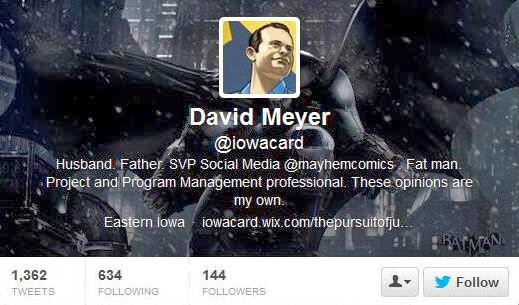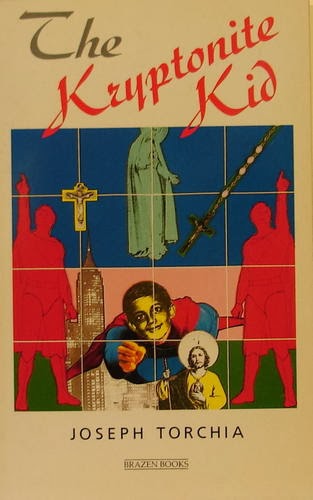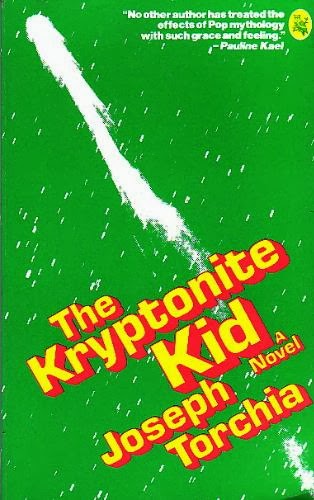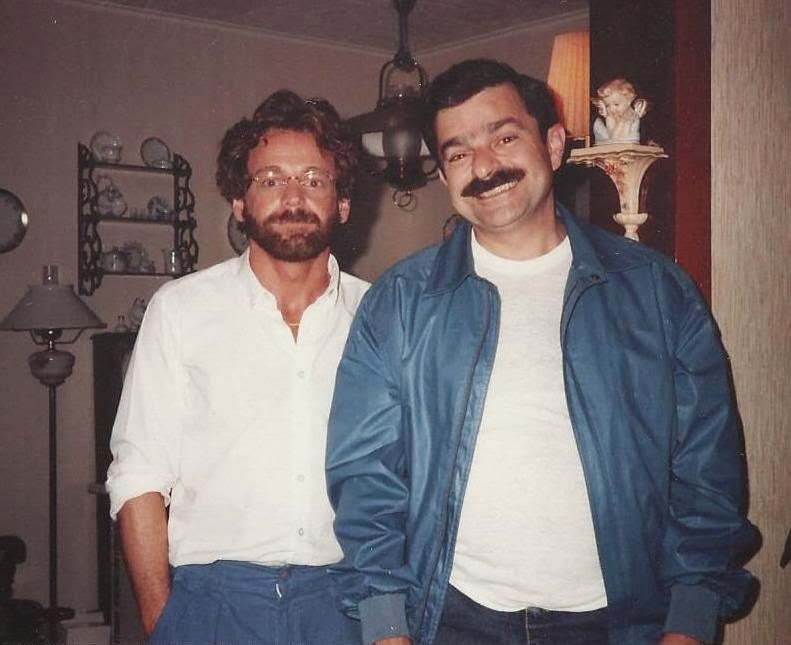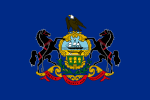new posts in all blogs
Viewing Blog: Noblemania, Most Recent at Top
Results 26 - 50 of 1,121

Research peaks, rejection horrors, promotion gambles, and other adventures in publishing from a picture book author, "Nickelodeon" writer, and cartoonist.
Statistics for Noblemania
Number of Readers that added this blog to their MyJacketFlap: 4
I’ve published about 75 books and my name is properly on the cover of about 73 of them.
In my first years as an author, I wrote quite a few work-for-hire books. Educational publishers would develop a series (on, say, animals or countries) and divvy up the titles among multiple writers. They’d email me a list of the available topics and I’d choose the ones that most appealed, but often, the overarching subject was not a particular passion. It was a chance to get paid to write, which was closer to my goal than getting paid to do something in an office.
Authors do not tend to read work-for-hire contracts as carefully as contracts in which we will be retaining ownership rights. Therefore, I did not know that I was agreeing to an undesirable credit situation until the book came out…twice.
The first instance was with a book published in 2005. I wrote a humorous yet practical guide called How to Do a Belly Flop, which was a companion to a book that I was not involved in, How to Give a Wedgie.
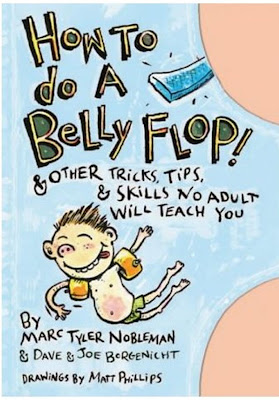
Did anyone not write this book?
One of the authors of Wedgie was David Borgenicht, who also co-authored the massively successful Worst-Case Scenario Survival Handbook series. So the publishers of Belly Flop wanted to take marketing advantage of that name (and his brother’s, who apparently co-authored Wedgie).
I understand it. I just didn’t like being blindsided with not one but two names under mine on the cover of a book I wrote all by myself. But unlike Bill Finger, at least my name was there.
The second instance was with two short novels published in 2009:This case was a bit more galling because the name plastered on the cover was not even a real person. “Jake Maddox” was a pseudonym created to group together a large set of sports and adventure novels written by various authors.
My name is on the title page of these two books, but the wording rankled me.
It doesn’t say “story by” but rather “text by,” which sounds mechanical, not creative. I realize the editor was trying to distinguish from the implied “written by,” but it sounds like I was the guy who typed in someone else’s words. As with Belly Flop, at least I am credited, but I wonder how young readers make sense of seeing both the mysterious Maddox and my name on the title page.
And now as I recount this, I’m vaguely remembering that the contracts for these two books actually may not have stated the possibility of assigning credit elsewhere, meaning even if I read them, I’d have been surprised when the books came out…but since I no longer have my copies of the contracts, I can’t doublecheck.
…is the second ever, and the first Spanish-language book on Bill Finger. The author is the ace researcher David Hernando.
A description:
Batman: Serenata Nocturna. El origen del Caballero Oscuro (Batman: Night Serenade. The Origin of the Dark Knight) is a hardcover, 160-page Spanish book on Bill Finger to be published in Spain in May 2014. It follows, in a fiction style narrative, all of Bill Finger's life and legacy, based on interviews and statements from Dennis O'Neil, Jens Robinson, Gary Groth, Denis Kitchen, Michael Uslan, Brad Meltzer, Gerard Jones, Danny Fingeroth, Graham Nolan, and Alan Porter, among others, like the unique contributions from Marc Tyler Nobleman and Athena Finger, Bill’s only grandchild. The book will feature an introduction by Roy Thomas and a cover by Paco Roca, one of the best-selling graphic novel authors in Spain today.
A glimpse at the evolution of the cover, which ends beautifully:
Note the paperweight.
And radio.
And gimmick books.And Popular Mechanics.
And tweed jacket.
And the shape of the papers on the floor...
As I alluded to above, Finger is in good hands here.
Roberto Williams is the director of an upcoming play in the Bronx called Fathers of the Dark Knight. It will feature the first known theatrical portrayal of Bill Finger. The production values look exceptional.
We recently exchanged messages regarding the play and the Google doodle campaign. He kindly permitted me to share the following humbling excerpt:I tell you, Marc, this thing has grown SOOO much larger than the simple school play I was originally planning with my students two years ago when I first was inspired by a copy of Bill the Boy Wonder…
You're been an inspiration to MANY people, Marc, with your crusade to get Bill is proper recognition.
Keep an eye here for more on the play, in particular when and where it will run.
The first round of sketches Ty Templeton did for Bill the Boy Wonder: The Secret Co-Creator of Batman contained a striking piece that unfortunately did not make it into the book.
It’s art to accompany the brief account of Batman’s origin, and though the tragedy of young Bruce Wayne’s parents is expressed in the text, I felt showing it so graphically would make the book a challenge to read aloud in schools.
Published here for the first time (unless it’s already been on Ty’s blog and I missed that!), the first proposed sketch for the origin scene:
Final art from the book:
The main theater for the “Batman at 75: To All a Dark Knight” panel at the Paley Center in New York on 5/5/14 is sold out. Seats are still available for the closed-circuit seating areas.
“I've been lucky to moderate some cool pop-culture events over the years, but there's one on the horizon that may take the cake.”
—Whitney Matheson, USA Today’s “Pop Candy” and moderator of the panel
After the panel, the panelists (Kevin Conroy, Chip Kidd, Kevin Smith, Michael Uslan, myself) will retire to a special undisclosed location to enjoy a Dark Knightcap.
One of the things that Bill Finger, star of Bill the Boy Wonder: The Secret Co-Creator of Batman, was known for was including larger-than-life everyday objects in his scripts.
At BookExpo America 2010, I was thrilled to see a 10x10 foot typewriter in the booth of Abrams Books (to promote the book Monumental: The Reimagined World of Kevin O’Callaghan):
I contacted the Kevin, hoping there would be an opportunity to borrow/rent his titanic typewriter for a Bill the Boy Wonder promotional event in New York. While oversized cool, the typewriter alone would not be enough.
We’d need a Batman as well. And I knew just the one: inspired by the Mego dolls of the 1970s…AKA 68% of my childhood
I didn’t hear back, and no such event materialized, but the vision persists in my mind.
Bill Finger died on January 18, 1974, in New York City.
The main mind behind Batman received no obituary in the New York Times.
Or anywhere else.
Except in The Amazing World of DC Comics #1:
I’m not dismissing this; I am glad someone did something. But Bill deserved so much more attention.
And who says an obituary must be published immediately after a passing?
Therefore, some time ago, I proposed to, I think, the New York Times and to the Huffington Post that I write Bill’s obituary to be run now.
An excerpt:
I am not suggesting a standard obit but rather a feature presented as an obit with an intro explaining that an actual obit should’ve run 40 years ago and this is a humble attempt to rectify that oversight. It is unthinkable now that someone of his cultural significance could die with no fanfare.
Because it’s Batman, and because Batman fans are passionately frustrated by Finger’s neglect, and because Batman is a New York story, I am confident that this particular approach would get a lot of attention—considerably more than a straightforward article. How often do you see a “posthumous obituary” (you know what I mean)?
I’ve long dreamed of seeing an obit for Finger in the NYT, the paper of the city in which he radically changed pop culture...
I did not hear back.
Splash, the mermaid romantic comedy directed by Ron Howard and starring Tom Hanks, Daryl Hannah, and John Candy, was released on 3/9/84.
If it has been a while since you’ve seen it, you may have forgotten just how funny it is.In honor of its 30th anniversary, here is the first-ever interview with David Kreps and Shayla MacKarvich Wingfield, the actors who played Hanks and Hannah as kids in the flashback opening scene.
Photos of them today are below.(After conducting this interview, I learned that David grew up living down the street from a friend of mine who currently lives down the street from me.)How old were you when you appeared in Splash?
Shayla: I celebrated my 7th birthday while shooting in the Bahamas! How many 7-year-olds have Tom Hanks, Daryl Hannah, John Candy, and Ron Howard at their birthday party? Well…they didn’t throw me a party, but I celebrated it in their company. I don’t remember what I did for my 6th or 8th birthday, but I sure remember my 7th!
David: Eight.
Shayla: Miami, FL; born and raised.
David: Miami Beach.
How were you cast?
Shayla: I had been doing print modeling and TV commercials pretty much my whole life and heard about the casting call through my agent. Well, through my mom from my agent. Having attended many casting calls before from my experience in commercials, I didn’t think much of it. But I vividly remember arriving at the hotel where the casting call was being held and being amazed by how many people were there! I had never seen that many people before for a casting call.
I remember I had an interview in front of the camera, then had to get in the pool and pretend to swim like a mermaid. I would like to think I was cast because of my acting skills, but I actually think it was how well I could swim like a mermaid that sealed the deal.
David: My mom was a stylist so would always drag me to sets and castings. Most of the agencies in Miami knew us, so when Splash was looking for a young Tom Hanks, they called us to try out. I went on a couple auditions and had to show that I could swim.Shayla and her mom
Do you remember what your reaction was when you were cast?
Shayla: I remember being surprised. There were so many people at the casting that I knew it was a long shot. I was only six at the time, so although I knew being in a movie was a big deal, I don’t think I fully grasped it. I was excited for sure, but I remember my family being really excited. Especially my mom—she had spent so much of her time taking me all over town for casting calls, fittings, photo shoots, etc. while I was modeling and doing commercials, so to get cast in something as big as a feature film was definitely very exciting!
David: Incredibly happy and excited. Especially loved that they picked me over my older brother.
Where was your scene filmed?
Shayla: Nassau, Bahamas (Paradise Island, Nassau, I think).
How long was the shoot?
Shayla: I was there for about a week but the weather was bad so they sent us back to Miami for about another week until the weather cleared. The second shoot was about five more days. What I remember most was that my scenes were actually some of the final ones shot for the whole movie so they wrapped the shoot while I was down there and I got to go to the wrap party! I thought it was cool to get to go to a big party with all the big movie stars, but I was only seven, so I remember mainly just having fun with my co-star (David) while all the adults had fun together!
David: Around a week, but not positive. 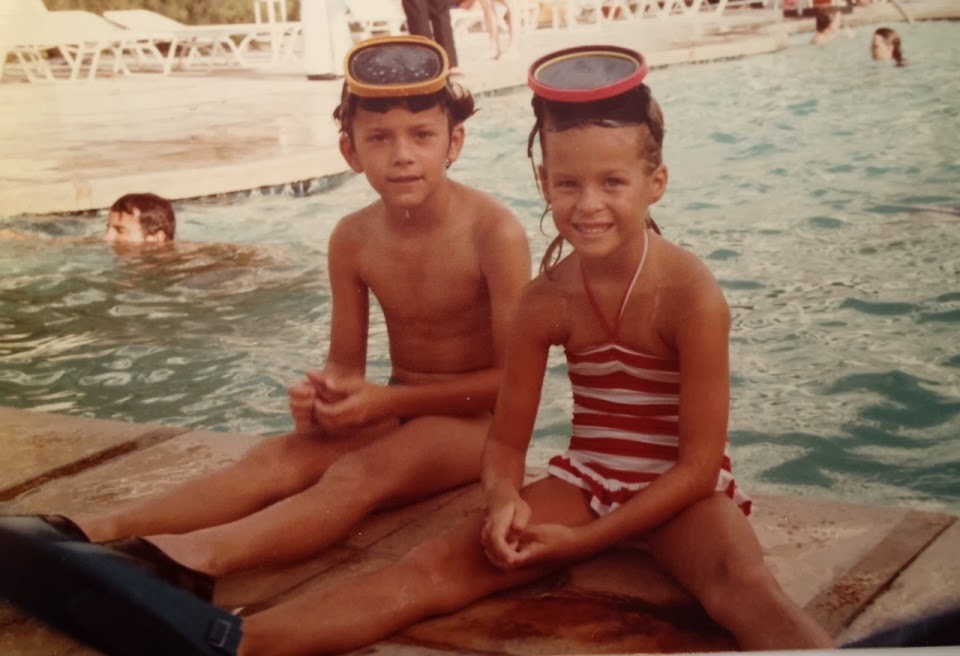
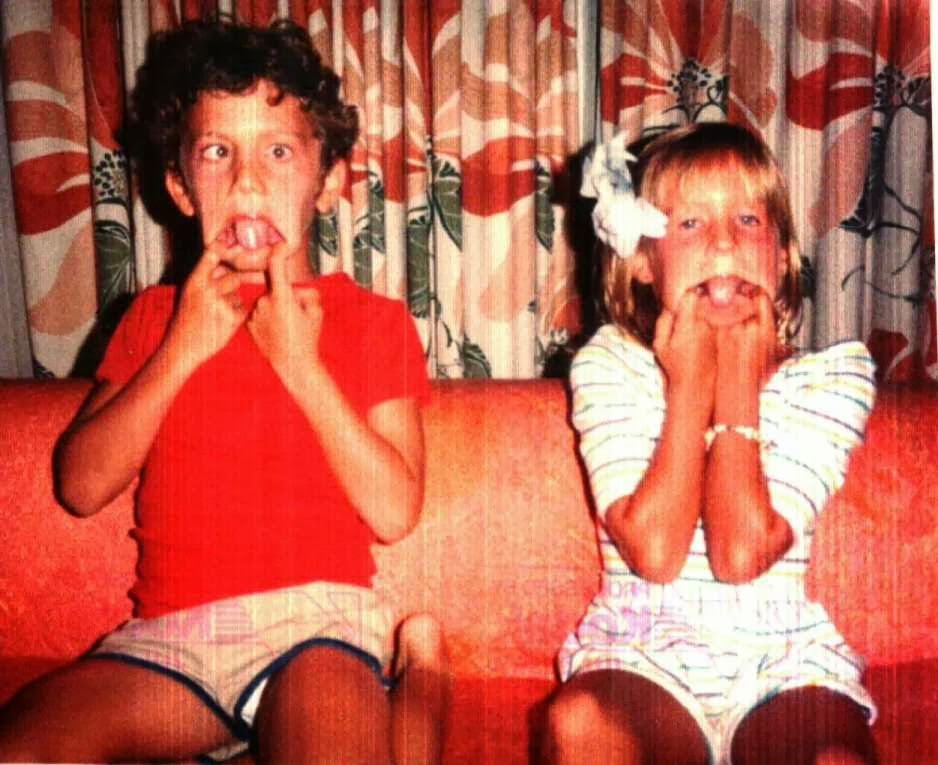
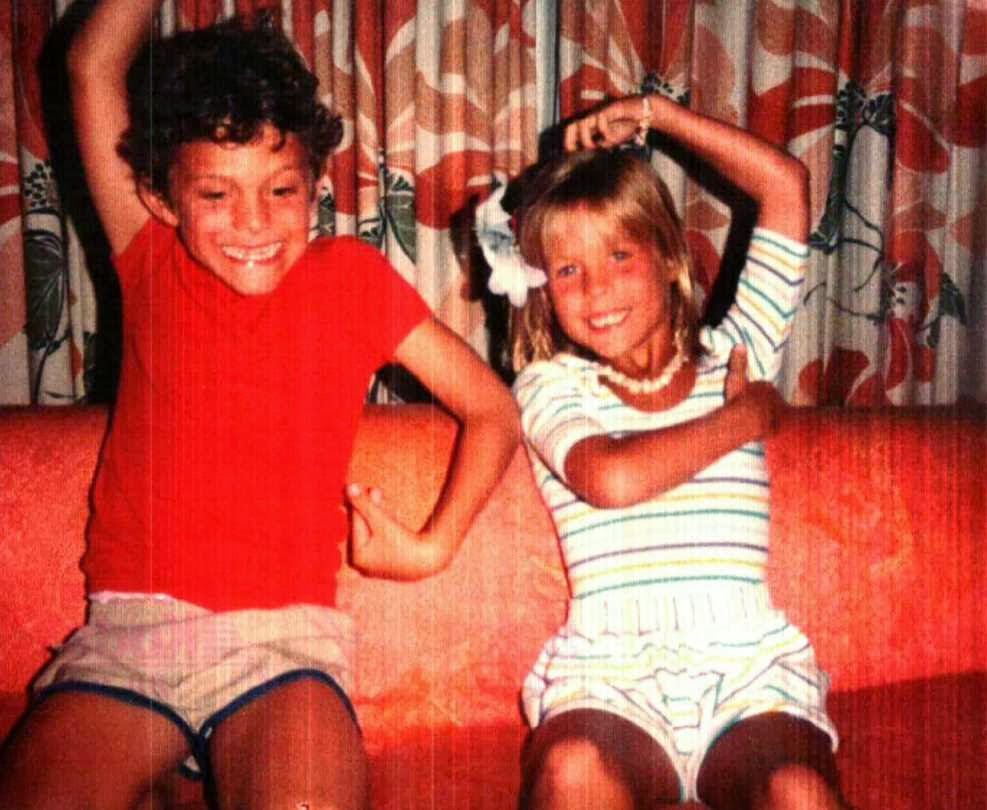
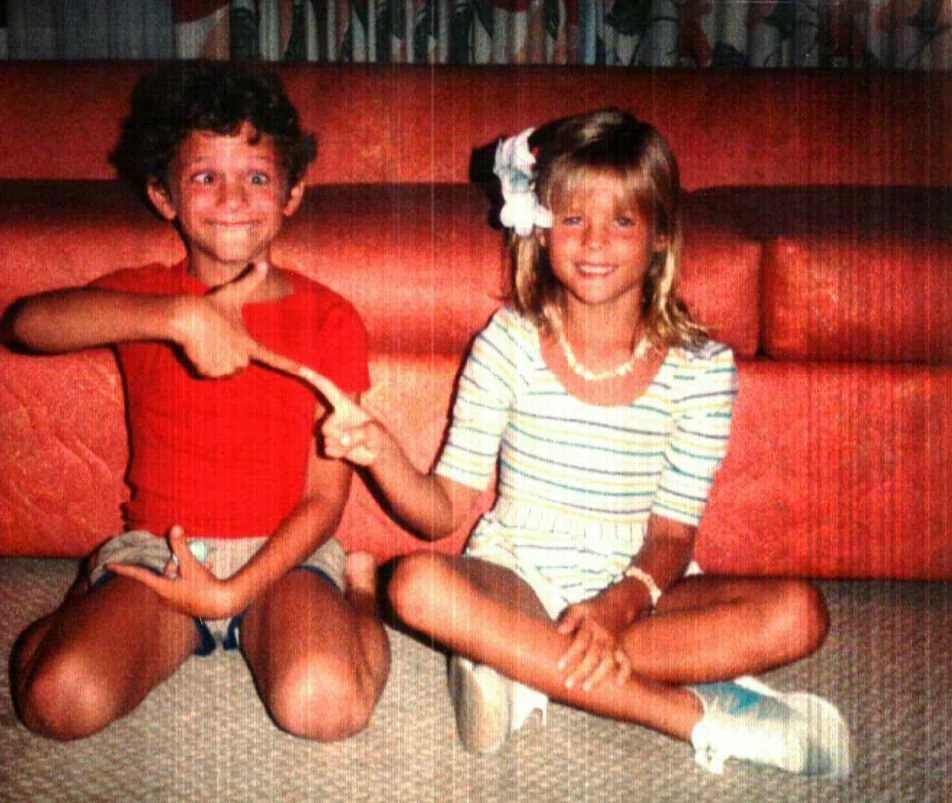

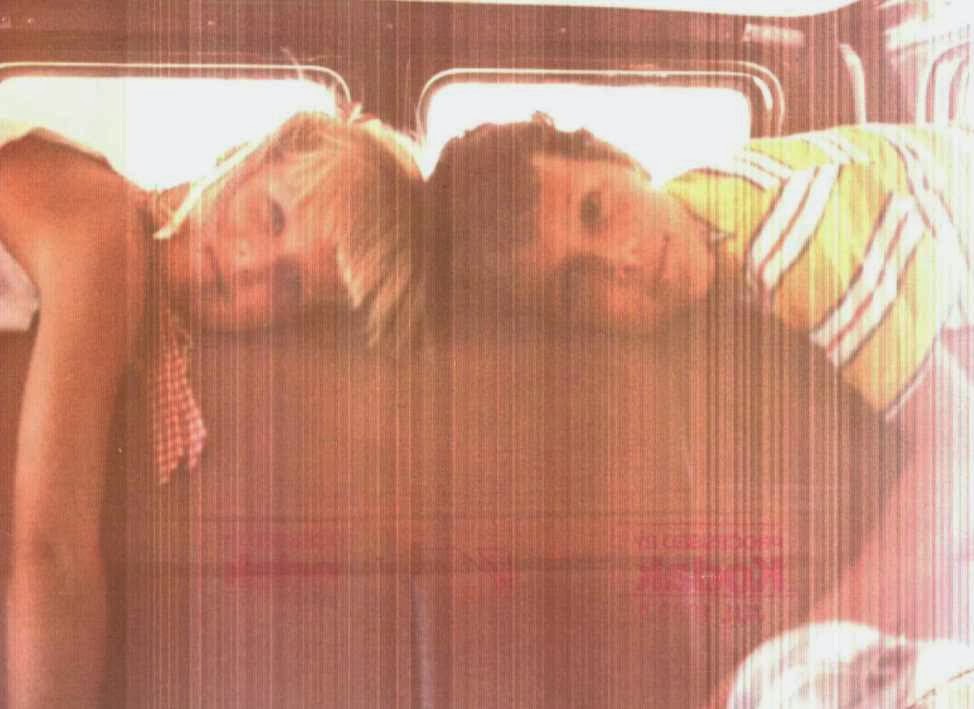
Shayla: I was definitely very excited and thought it was super fun getting to go to the Bahamas with my mom to shoot the movie, but it mostly just felt like another fun day at the beach with a bunch of people I didn’t know. All of the crew was so nice though and really made me feel special which made the shoot memorable. It did not really hit me how big of a deal it was to actually be in the movie, though, until it was released in theatres.
David: It was awesome. No one was really famous at the time of shooting so it was more about being able to miss school and play around in the Bahamas. 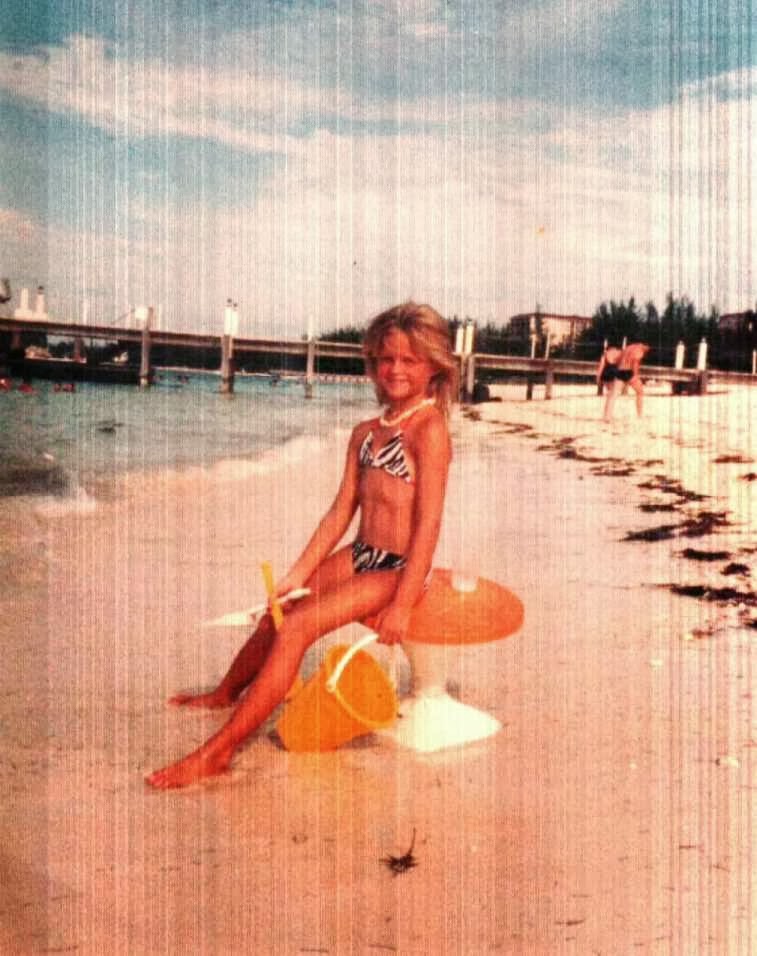
What was the hardest part of the shoot?
Shayla: Definitely being topless! I hated wearing bikinis when I was little. I was even self-conscious of showing my belly button. I knew ahead of time I would have to be topless since I was playing a mermaid and I was terrified!
David: Can’t remember there being any hard parts. It was probably harder on them trying to control me. How were the underwater shots filmed? Not really in the ocean, I presume?
Shayla: Actually, all scenes were filmed in the ocean! We were right off of the beach in Nassau, and they had scuba divers all around us that we could go to for air if we needed to. Just another day at the beach for a Miami native.
David: They shot some of the underwater scenes in the pool as well as the ocean. Being from Miami, I grew up on the water swimming, fishing and diving, so it wasn’t challenging for me.What do you remember about working with Ron Howard? Did you know him from Happy Days?
Shayla: I knew that Ron Howard was in Happy Days and that it was a very big show, but I was too young to really watch the show. I remember being confused why he was the director instead of an actor, but I do remember that he was incredibly nice to work with.
David: I had no idea who he was. He did get upset with me once for not showing enough sadness when the mermaid left. I kept on laughing. Tom Hanks is on the right (in the blue Speedo).

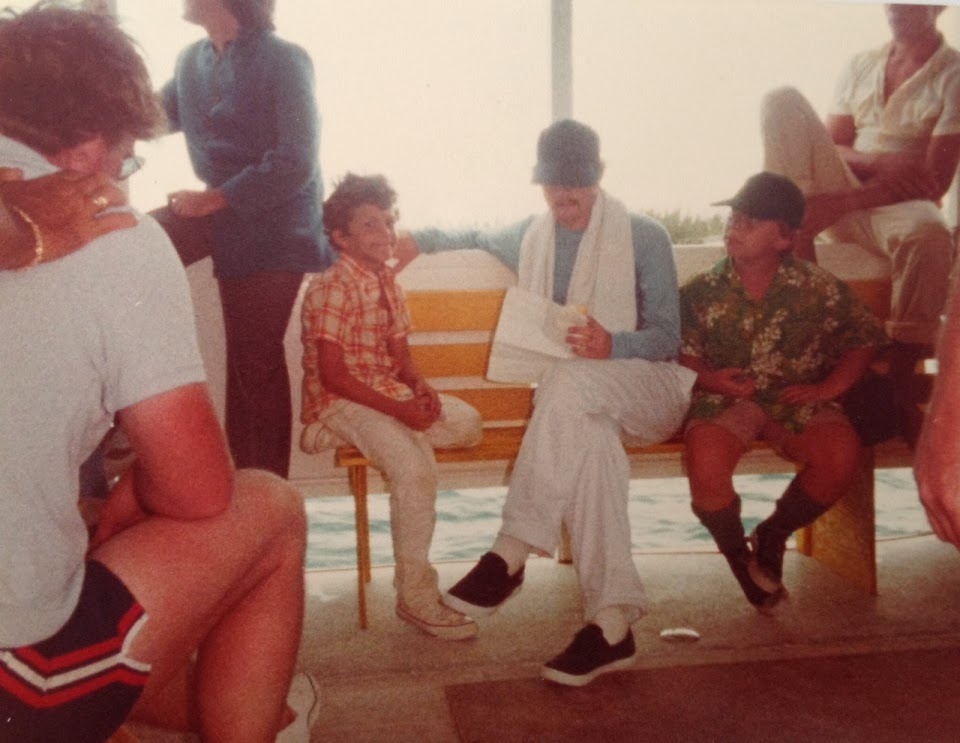
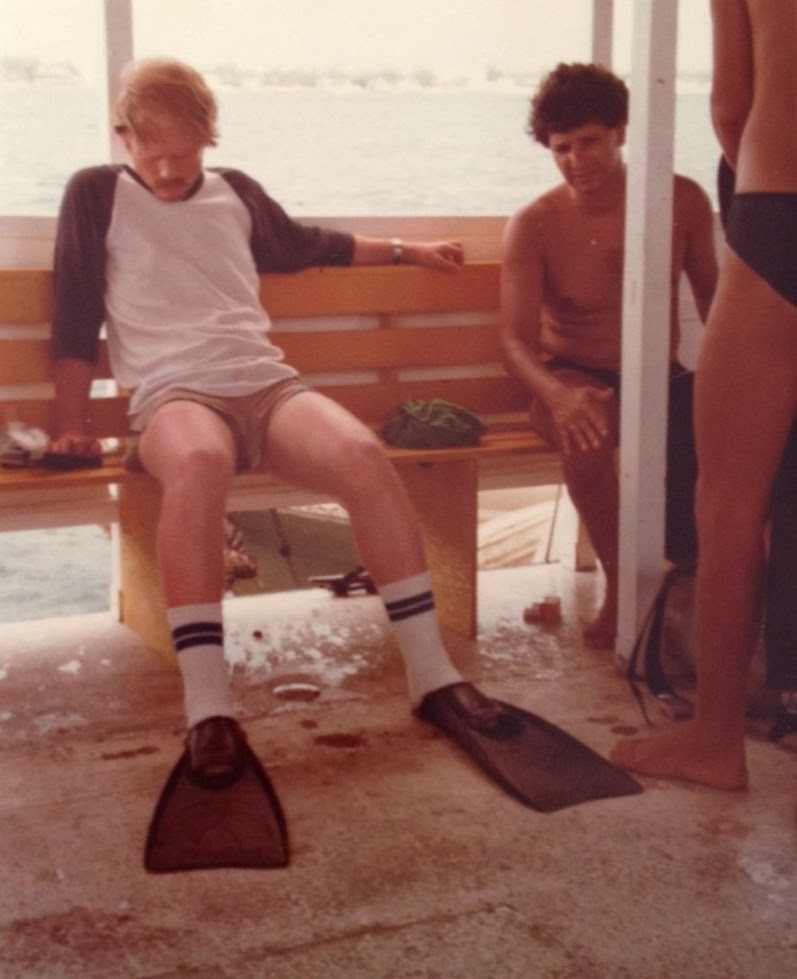
What do you remember about your interactions with Tom Hanks, John Candy, or any of the other stars who were not in your scene?
Shayla: I met Tom Hanks, John Candy, Daryl Hannah, and Eugene Levy. I knew who Tom and John were, but not Daryl and Eugene. All of them were amazing!
But I will never forget meeting Daryl Hannah. As I mentioned before, I was very self-conscious about not wearing a top, so the crew took me to meet Daryl for the first time while she was in makeup—which was a major process. She actually had to swim in that mermaid tail, and was in makeup for hours to glue all the pieces onto her belly to make it look natural. Then they put gold makeup all over her chest and arms with an elaborate shell necklace.
The first time I met her, I might as well have been meeting a princess! I couldn’t believe it when I saw all that beautiful long blonde hair and that mermaid tail. She also had to be topless, which is why they took me to see her. She was so sweet and showed me the big necklace and all the gold makeup that had been put on her, and told me that I would be getting the same thing. She assured me I would be just as covered up as if I had a bathing suit on, only way prettier! She was so incredibly sweet.
David: I just met Tom and Daryl. Clearly we are on first name basis.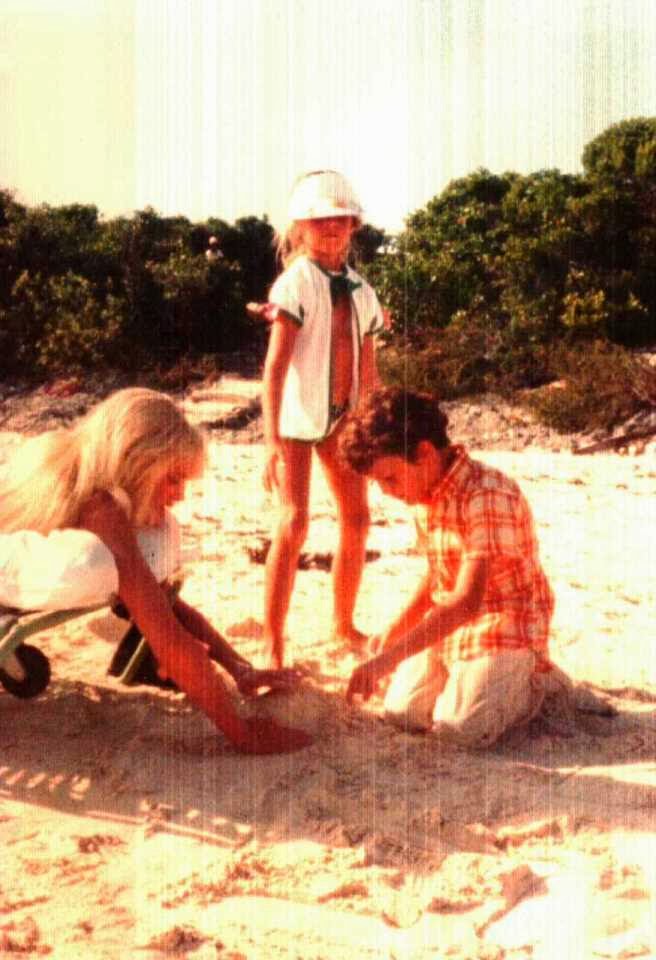

Shayla: Back to the topless thing again…I was playing on the beach on the set knowing I was about to be called to shoot one of my scenes. I was ready and happy. Then all of the sudden Ron Howard yells into his bullhorn (megaphone…whatever you call it), “Okay, Shayla, we’re ready for your scene. We need you to take your top off now.” I instantly started bawling crying; I was completely terrified.
Next thing I know I was in the water and the camera was shooting me while I was crying the whole time, and all I wanted was my mom! Fast forward to the movie’s release, and everyone remembers me as the little Madison who was crying as Allen was taken away. Everyone complimented me on what a wonderful actress I was because my crying was so believable. Little did they know…
David: One night John Candy and I went out boozing. I wish. Don’t really remember any funny stories worth retelling.
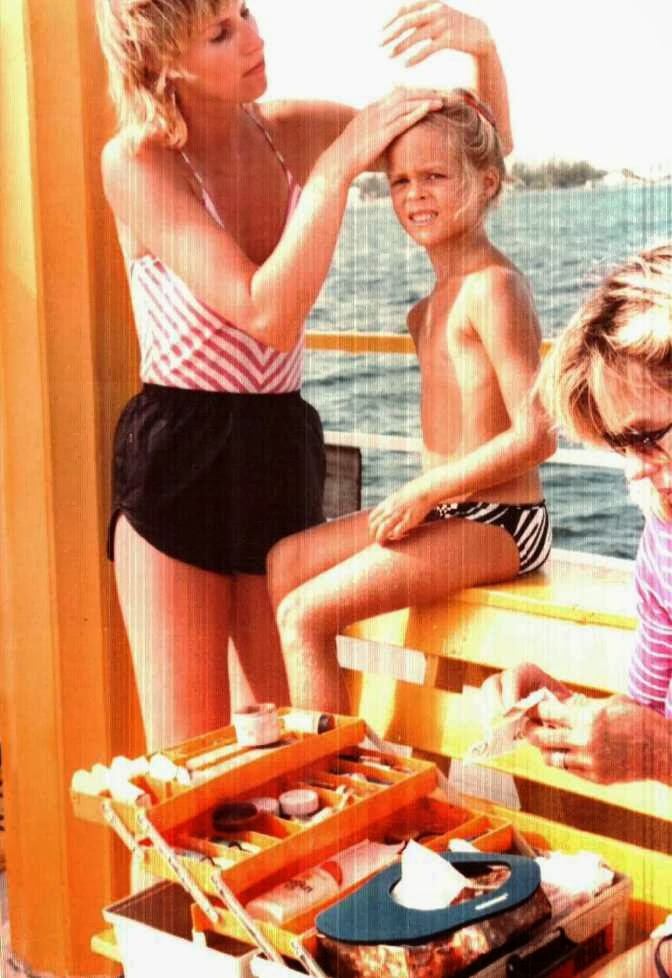
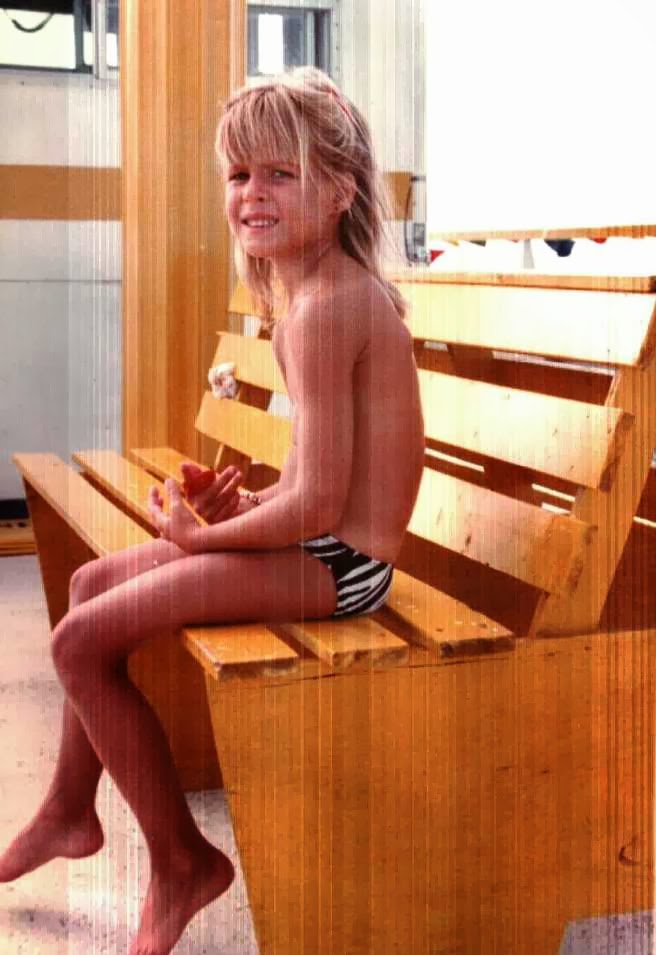
Anything go wrong on the shoot?
Shayla: Just the weather causing delays.
David: Not that I was aware of.
What did you think of the movie?
Shayla: I really and truly absolutely loved it! I remember my family and I being so surprised when it came out. We didn’t realize at the time I filmed just how funny this movie really was. We still laugh when we see it on cable today, and I know we would feel the same even if I wasn’t in it. Truly a timeless film and I am so honored to have been a part of it.
David: I remember going to the theatre to see it with all my friends and family. We waited to see my name in the credits. It was great.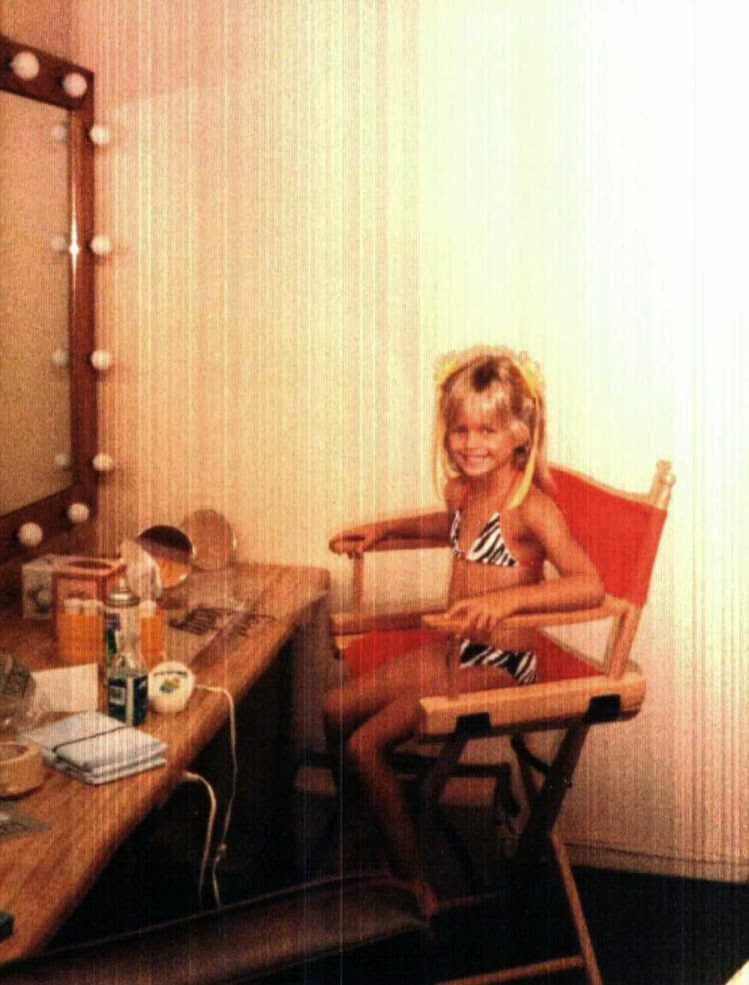
What did your parents think of it?
Shayla: Same as above, but my mom also thinks so fondly of the whole experience since the whole cast and crew were all so great.
David: What parent wouldn’t love seeing their kid on the big screen? They loved it and bragged about to all of their friends.
What did your friends think of it?
Shayla: My close friends absolutely loved it and thought it was so cool I was in it and wanted to know everything about my experience. Unfortunately, later, when I was in about 4th or 5th grade, some kids found a way to tease me about it which actually made me self-conscious about it for a while. Even though they didn’t know me, I was labeled as a snob because I was in a movie. I went through a stage where I didn’t want people to know I was in it because I didn’t want them to think I was a snob. Kids can be so mean sometimes and it is so sad that has to happen.
David: Not many kids get to do this so they thought it was the coolest thing ever. They still bring it up to this day…but more in a teasing manner.
Did you attend the premiere, and if so, what do you remember about it?
Shayla: This part is definitely the most memorable for me. Although I didn’t attend the premiere, I did [go to the movie] opening day at my local theatre, The Falls in Miami. I went with my family super excited to see it, but thought our trip to the movies would otherwise be like every other trip to the movies. When we showed up to the theatre, there was a huge line so my family and I took our place in the back of the line.
My parents asked the people in front of us what movie the long line was for and they said Splash. My parents then told them that I was in the movie and somehow that news ended up making it all the way to the front of the line. Next thing I knew, someone from the theatre came up to us in the line and invited us into the theatre, gave us popcorn and drinks, and let us take our seats.
After the movie, as we were in the lobby, all these people started coming up to me asking me for autographs. I went to the bathroom and literally as I was in the stall, I could hear a girl telling her mom, “Mommy, Madison is in the potty next to me.” I couldn’t believe it! All these people wanted to meet me and it was exciting, but very strange to me at the same time.
David: Didn’t attend a proper premiere. But went to the opening night in the theatre.
Did the movie ever affect your dating life in any way (i.e. when you first told boyfriends you were in it)?
Shayla: Not really. I kind of kept it quiet after some kids had made fun of me for it during my later years in elementary school.
David: The girls loved it. Splash was a serious panty dropper. Ha ha.
Did you receive fan mail? If so, do you still have any of it?
Shayla: I don’t think I ever did. I do not remember any. But I do get people who contact me via Facebook from time to time.
David: No.
What were you paid?
Shayla: No idea! My mom said I was paid SAG movie scale…whatever that means!
David: I honestly don’t remember exactly what I got but to this day receive residual checks for every time it plays.
Were you ever recognized in public? How often and when last? Any stories about that?
Shayla: I don’t think I have ever really been recognized in public, but people who already knew me but didn’t know I was in the movie would come up to me and ask me because they happened to see my name in the credits.
David: No.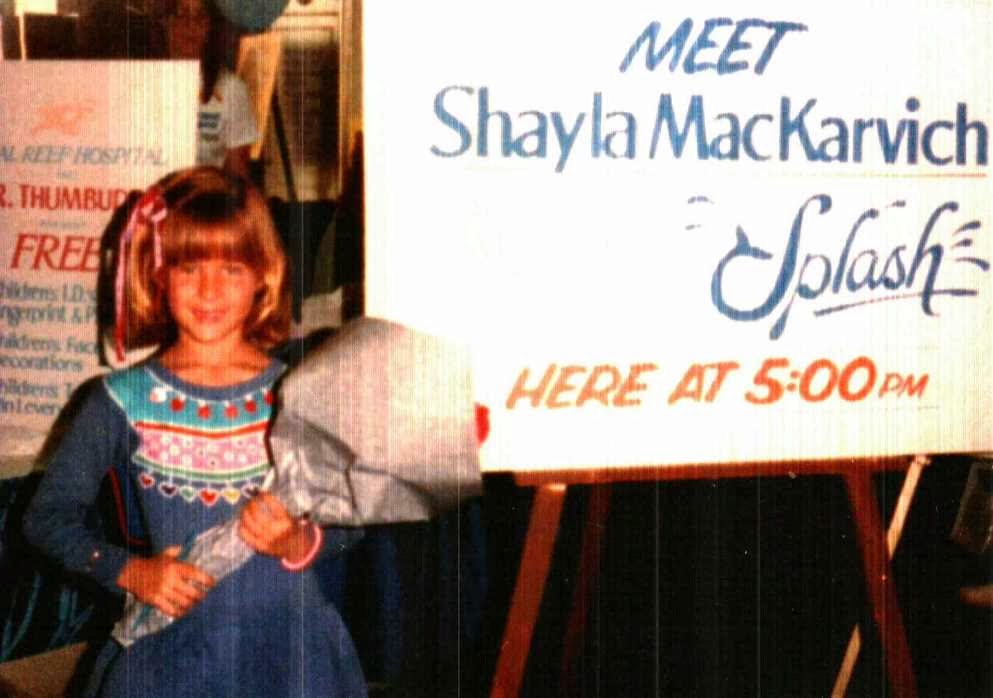
Shayla: No—well, not really. I shot a scene for another one, but it was never released and I can’t even remember the name anymore. As a Miami native, I did appear in two segments on Miami Vice. That was pretty cool and it felt like being in another movie.
David: Small part in Police Academy 5. But mostly did commercials.
Did you two keep in touch, and if so, when were you last in touch?
Shayla: We remained friends for several years after the movie as we were both in the modeling and commercial world, and our moms also became friends so we did get together socially from time to time. I think I lost touch with him toward the end of middle school, but I have great memories of him and his family. Would love to reconnect, if even just to be friends on Facebook! He is definitely one of the more memorable friends from my young childhood. I feel like I remember hearing he planned to study film in college?
David: We kept in touch for only a couple years. Growing up, I would always see her at castings. We actually used to do a lot of print work together.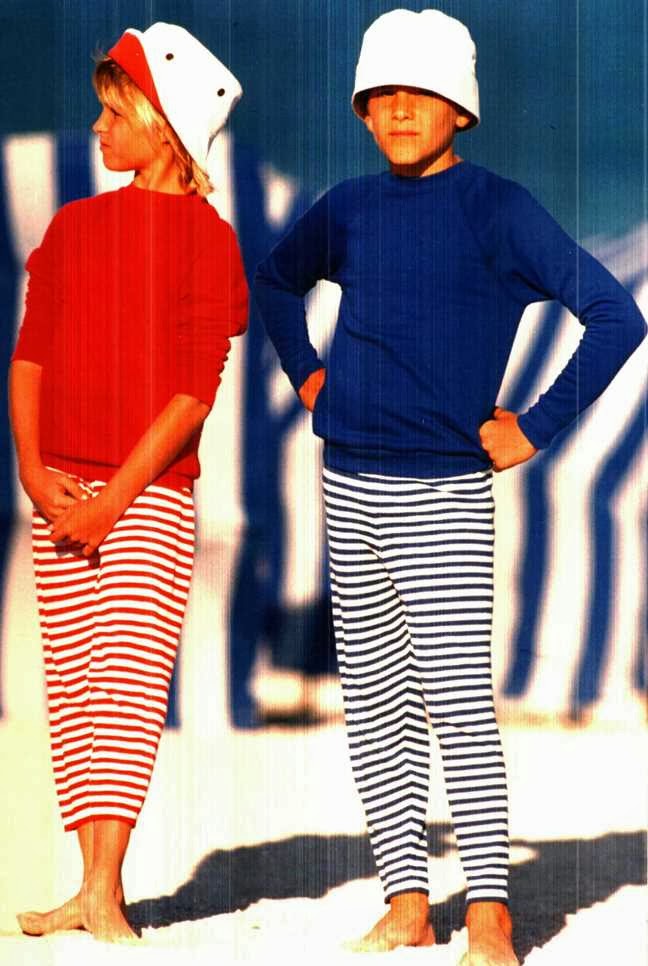

Shayla: I thought I was destined to be a University of Florida girl, but moved from Miami to Atlanta during my senior year of high school. Visited the University of Georgia campus and fell in love instantly. I had a great four years in Athens, GA and got my bachelor’s degree in marketing. GO DAWGS!
David: Business at Babson College.
What are you doing these days?
Shayla: I own a children’s store in the Buckhead area of Atlanta called Pretty Please (Instagram: @loveprettyplease). It is an upscale boutique that offers whimsical children’s apparel, décor, accessories, and gifts for newborns through tweens. I own the store with my sister, Keely, who started the store in 2004 in Destin, FL.
There are times when I find my mind drifting thinking of what my life would be like if I had pursued an acting career, then I realize what it means to me to be working with my best friend and be part of a local, family-owned business, and I realize I am doing exactly what I am meant to do!
We both have so much fun with all the whimsy and imagination involved in finding unique products for children. It is our dream to have a TV show about all the ways kids can express their personalities through creative décor and fashion…we are both huge HGTV fans and would love to do something similar that focuses on kids. David: Real estate development.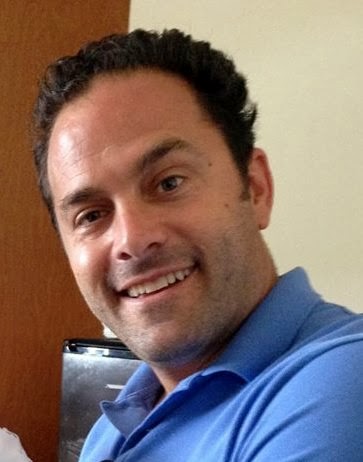
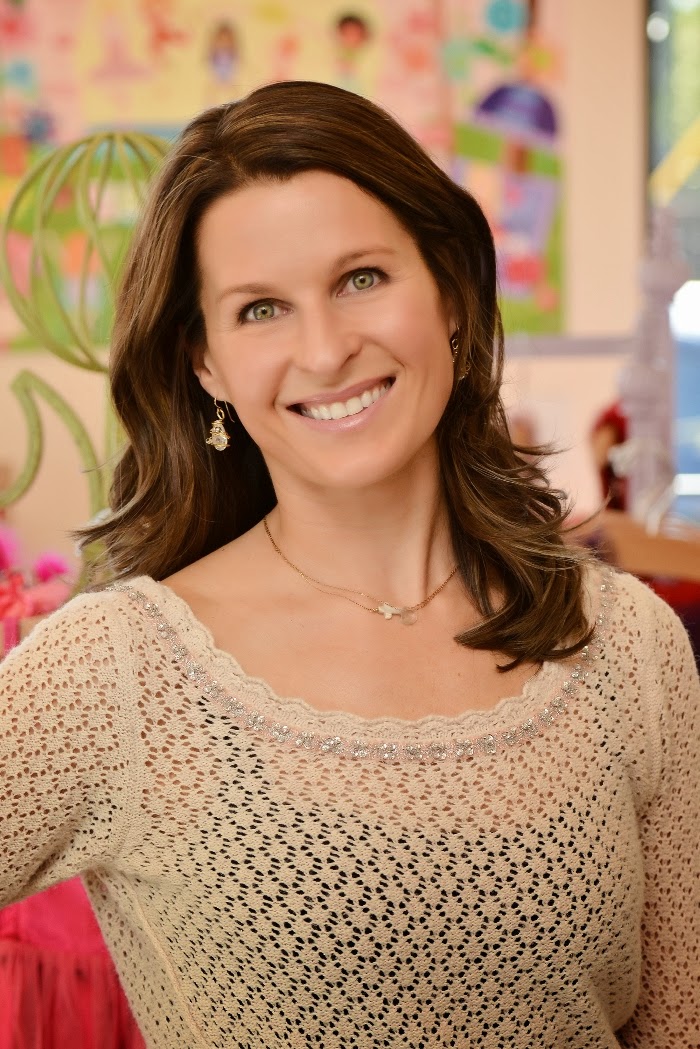
Where do you live?
Shayla: Atlanta.
David: Miami.
If you are/were married, what was your future husband’s reaction when he learned you were in this movie?
Shayla: I married a wonderful man seven years ago. We met when I was working in real estate in my late 20s. It’s funny because he is a huge movie fan, especially ‘80s movies. Shortly after we started dating, I came home only to walk in the door and see my scene from the movie freeze-framed on the TV. He immediately started laughing…“It’s you! On the 20th anniversary edition!” I had no idea it was the 20th anniversary, but he had bought it and surprised me.
David: My wife was impressed and thought it was the coolest thing ever when she was in elementary school (we are old family friends). Now, probably not so much. However, my wife and mom are ready to put our son to work.
Kids?
Shayla: I have a beautiful 5-year-old girl. She absolutely loves to perform! She is very drawn to singing and drama. My family is the most amazing blessing and they bring me so much joy.
David: Six-month-old boy.
Shayla, does your daughter know about the movie yet?
Shayla: She gets excited when daddy shows her mommy on TV. She’ll ask me questions about being a mermaid like, “Could you breathe underwater?” or ask me why I was crying, but I’m not sure she fully understands since it doesn’t really look like me.
What did you think when you first heard from me?
Shayla: That you were possibly a stalker. Sorry… Then when I realized you probably weren’t, I actually thought it was odd that you would want to talk to me. I know the movie was a huge hit in the ‘80s but my part was so small, it was hard for me to believe you would want to interview me!
David: Surprised…wasn’t sure many people would be interested, but flattered.
Has anyone else ever interviewed you about this? If so, when and for what publication?
Shayla: Some local newspapers and magazines did shortly after the movie came out, but I really can’t remember what they were.
David: No, but I’ve been waiting 30 years for this. LOL.
How do you look back on the experience?
Shayla: I have to say, answering your questions was very fun and I appreciate you reaching out to me since it helped me stop and think about what an awesome experience the whole thing was. Thirty years is a long time, but taking a moment to really look back on it, I am so grateful that I got to be a part of this fantastic movie!
David: It was a great experience. Can’t believe I played a part in a movie that has turned out to be one of the biggest of the ‘80s.
Anything you’d like to add?
Shayla: I think you pretty much covered it…great questions!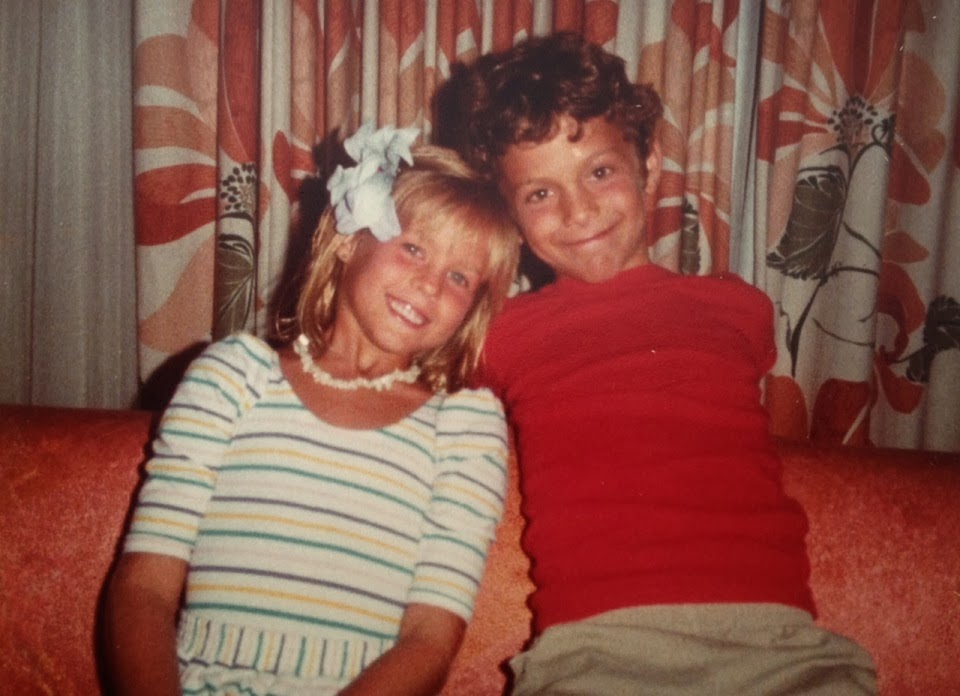
All photos courtesy of David and Shayla; please no reuse without permission.
You may also like my interviews with women who starred in iconic 1980s music videos, from a-ha to ZZ Top.
“Twyla and the Phoenix”
Singed by the flame
Wings spread anew
Rising in the air
Proud Phoenix
No more cowering in the shadows
You dance alive in the flames
Weakened by the emergence
But not for long
Fueled by the strength
The strength in her song
Songs compiled by the old tunes
In her head
Losing the fear
Forgetting the dread
Be proud Phoenix
You’ve begun anew
The embers are dying
That gave birth to you
Singed by the flames
Forged by the fire
Hope in the wingspan
Lifting from the pyre.
—Twyla Olsen (4/28/90)
On perhaps the most appropriate day for rebirth, January 1, I heard from an educator named Twyla Olsen.
Twyla lives in a small gold-rush town in the Sierra Foothills and instructs speech and communication classes at Columbia College. She is also an artist located at Studio B in downtown Sonora. She can frequently be found in the southwest, one of her favorite locales to paint scenery.
She wrote me the (excerpted) following:“Amazing to run across this information on David and the Phoenix. I didn’t think Mr. Ormondroyd would still be alive.” [MTN: Nor did I.]
She said she’d written the above poem many years after reading David and the Phoenix. I forwarded her kind message to Edward and the two connected directly.
I asked if Twyla is she’d elaborate on her connection to the book and explain why she reached out to me. She granted me permission to post her response:The poem almost wrote itself. It appeared to me one evening sitting at the computer and in response to an English class assignment. I was a re-entry student at age 38, feeling both fear and excitement as I returned to school. This is when I first began experiencing the memory, power, and influence of a book I had read in 2nd grade.
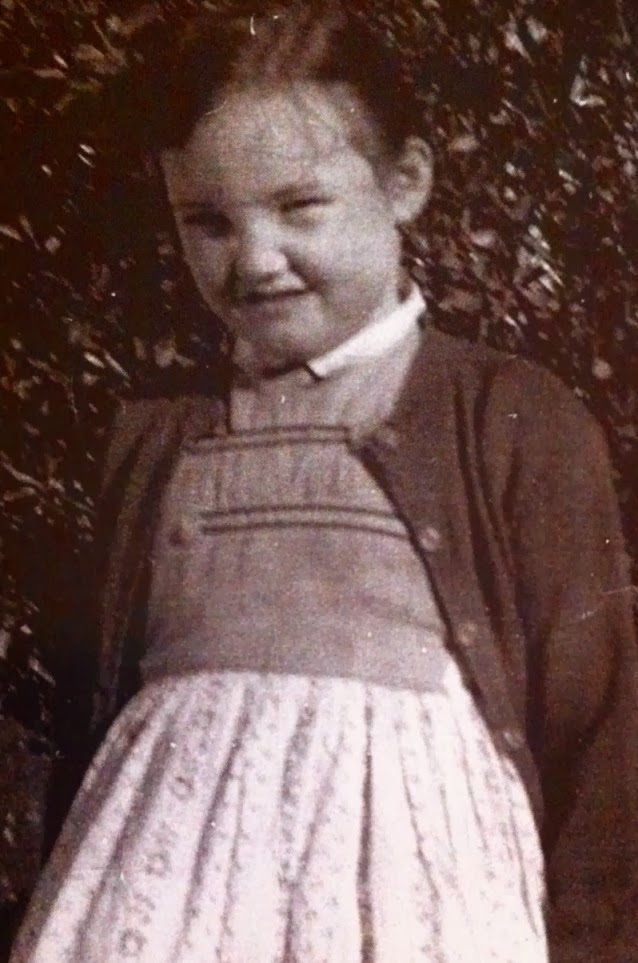
Have you had something—a book, a poem or a myth that you read when you were very young—stay with you, guiding you throughout your life, reappearing exactly when you needed it? That’s what the book David and the Phoenix has been for me.
It is amazing that the theme of this book that I read over 50 years ago as a child would impact my adult life in so many ways.
[Soon after] I wrote the poem, I realized that it [had come] almost fully formed from my memory and impressions of Edward Ormondroyd’s book. But what evoked the memory?
“Twyla could work harder if she tried and [could] receive better grades,” said Mrs. Hunt in 3rd grade. I was and have always been a creative thinker and given to daydreaming in class. Mrs. Hunt didn’t understand that my mind was full of images that I had no way of communicating to her. When I read, the world came alive with my mind’s pictures and David’s Phoenix was a powerful image.
I was curious when I wrote my Phoenix poem as an adult. Why had Mr. Ormondroyd’s book been dormant but still alive inside me for so long? Maybe it was the adventure of education. After writing the poem, I thought how amazing it would be if I could tell the author about this poem. I wanted to let him know how this book had captivated my young mind and at this unexpected moment suddenly reappeared! Unable to find any contact information for him, I went on about my life.
Fast forward to today. I began to work on a project persuading funders in education to remember how important the humanities and the arts are to a well-rounded education. After all, I was living evidence that we cannot put imagination and creativity on a spreadsheet. We may not know how exposure to the arts will inspire or guide a student down the road. But I know deep down that without art, literature, and visualization, my own life experiences and career as an educator would have been far less colorful, and certainly less creative.
Doing research for this important presentation led me to your blog. I was amazed that you had interviewed Mr. Ormondroyd, and that the opportunity for me to share my poem with the author of David and the Phoenix was still a possibility! It was a chapter called “In Which Twyla Finds Marc on the Internet and Her Dream Comes True.”
Sharing my poem with Mr. Ormondroyd was life coming full circle and could very well indicate [the beginning of an auspicious] New Year.
On 2/24/14 (actually, it was 1:30 a.m. on 2/25/14), I was a guest on pop culture savant Nick Digilio’s show on WGN Radio 720.
This station is rated number one in Chicago and a good portion of the Midwest—actually, thanks to its 50,000 watt signal, it reaches 38 states plus Canada.
We had a lively chat for about 30 minutes in which he asked me about various women in the “girl in the video” series—both ones featured so far and, in particular, ones I am still looking for.
Thank you to Nick and his right-hand man/producer Dan Sugrue for the opportunity to broadcast my search to 38 states plus Canada. So far it hasn’t yielded any leads, but I was happy to hear that listeners loved the idea.
When I was a kid, my mom was anti-coloring book.
She is an artist and a teacher. (It’s been decades since she produced art professionally and she stopped teaching professionally before I was born, but these talents don’t leave you.)
The reason she did not like coloring books was because they put a border—literally—around a child’s creative impulse. She preferred a blank piece of paper, and now, so do I.
I have reminisced about books of my youth here (some of the more obscure titles of my early years), here (influences on my first published book), and here (this one is both recollection and game), and buried among all that nostalgia is a book that was well aligned with my mom’s philosophy.
In fact, it was called—literally—The Anti-Coloring Book.

Susan kindly agreed to an interview. She told me that March is National Youth Art Month. And she is a reminder that part of being smart—literally—is “art.”in Susan’s living room on her favorite chair;
directly above her head is a drawing her son made;
photo by Talisman Photo
When and how did you get the idea for The Anti-Coloring Book?
I had been teaching art for about ten years when I found myself taking an art education course in a university. The professor took me aside and asked me to “ignore” the assignments. Knowing of my experience as an art educator, he wanted me to do something different than the assignments he was giving the other undergraduate students. When I asked what he wanted me to do, all he said was “We’ll see.” Every week I again asked him what my special assignment would be, and “We’ll see” was the best answer I got.
One day he gave a lecture about how stifling coloring books were for children. I raised my hand and mentioned that this information had been documented decades before yet coloring books remained popular. I suggested that it wasn’t art educators who gave children coloring books, but well-meaning parents who had no alternative when they wanted to offer art activities to their children. “Why doesn’t someone do something about it?” I asked. He pointed at me and said “That is your assignment for the term.”
I struggled with the assignment for a while and finally decided to take my best, tried-and-true art lessons and convert them to a coloring book format that would be familiar to parents. I presented it to the class and was shocked when everyone applauded. The professor said that the assignment was so well done that I should consider trying to have it published.
I was very pleased with myself, but took it no further until, at a family gathering, I mentioned it to a relative who was a published author. He offered to show it to his editor. She loved it but was a trade book editor so she sent it to the children’s department. They rejected it. She went to her boss and asked if she could publish it, even though it was not a typical trade book, and he said that if she really believed in the book she should go for it. I think that was good for me, because in those days children’s books did not get the attention from reviewers that trade books did.
Where did the name of the book come from?
I was thrilled to have sold a book to a publisher and was telling a friend about it on the telephone. He couldn’t understand what the book was about and as I struggled to describe it, I heard myself say, “It is kind of an anti-coloring book.”A light bulb went off in my head and I hung up and immediately called my editor. She advised me that although very descriptive, we couldn’t use that title because “negative titles are not acceptable” in the publishing world. She wanted to call it Just Imagine. This was in 1978 when the world had been “anti-war and anti-nuke” for a decade, [yet] I argued that my title would not turn young parents off. She and I argued back and forth for two days and she finally agreed to let me call the book The Anti-Coloring Book.
How did you get it published? How long did the process take from creation to publication?
In the seventies, it took nine months from submission to publication, just like having a baby. I am now beginning to publish books on my own through Amazon and it takes a week or two from the time I submit it until I receive a proof copy, and another week or two after I approve it for it to be available.
Was it the first thing you published?
The Anti-Coloring Book was my first book.
What was the reaction from the media and the public?
The first book got outstanding reviews and the first printing sold out immediately.
Did you pitch/sell it as a series, or did that come up only after the first one was out?
After the first book was on the market and doing well, my editor called me and said that the first book was so successful, Holt wanted me to do a second book. They had paid me an advance of $1,800 for the first book and offered me a $2,500 advance on the second book. Thrilled though I was, I went looking for an agent. She negotiated an advance of $25,000, ten times the publisher’s offer, which more than made up for the 10% fee I have been paying her for the last 35 years.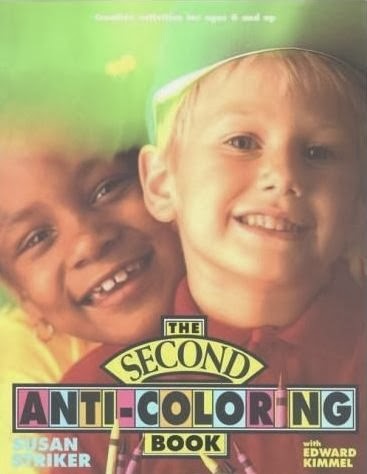
How many versions of The Anti-Coloring Book have been published?
There have been 14 versions of The Anti-Coloring Book and one I called Young at Art: An Anti-Coloring Book for Preschoolers. I wrote that one after my son was born. Because of my work with him and his friends, I became very interested in the importance of scribbling for young children.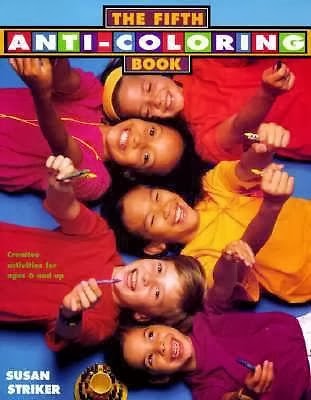
Six are general interest books that [are numbered] and the others are special subject books, which usually reflected what was going on in my life. Build a Better Mousetrap: The Inventor’s Anti-Coloring Book came about because my ex-husband was a patent attorney and often came home with stories of funny inventions clients brought to him.
Artists at Work: An Anti-Coloring Book of Careers in Art was written because I overheard a student tell his friend that the only time he was ever happy in school was the one hour a week that he was in the art room. I stopped dead in my tracks and suggested to him that he could be a professional artist when he grew up and be happy all day long every day. He looked at me like I was crazy. A career in art was certainly not on his family’s radar for his future. My guess is that he is working on Wall Street now. I wrote that book for him, to prove that artists can earn money and don’t have to starve.
Exploring Space on Earth: An Anti-Coloring Book about Architecture was written while I was studying interior design and was in the middle of renovating my home.
Have you been involved in all of them?
I wrote them all and either drew the illustrations or supervised the artists who drew them for me. I own the registered trademark for the name. I have always taught art full time and many of the ideas for the books come out of my experiences teaching.
What licensed editions (like the one with DC Comics characters) did you do and how did those come about? Did the publisher seek out partners? Did you suggest any?
When my son was young, he loved the superheroes and always wore a cape. I encouraged his interest and bought him all the toys, took him to see the movies, etc. One day, when he was four years old, he was very angry at me because I was working at my drafting table instead of taking him to the playground. He stamped his foot and said, “Why are you always working on an Anti-Coloring Book? Why don’t you write a superheroes Anti-Coloring book for me?” I told him that was a brilliant idea!
I immediately telephoned DC Comics and, much to my surprise, was told that they knew of my work and were trying to copy the idea and couldn’t. They invited me to come and talk to them, and the book was published in time to be the party favor at Jason’s fifth birthday party the following year.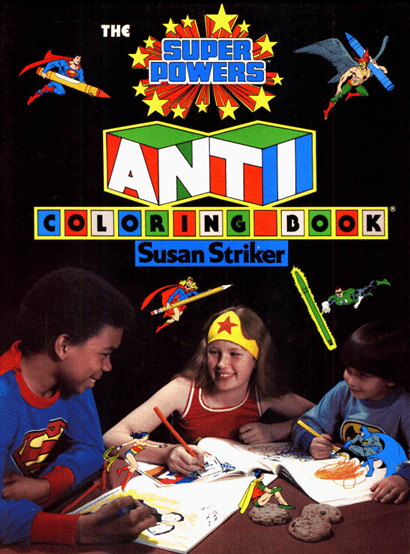
DC would not allow me to do the drawings, as they only had their own artists draw their characters. I just made rough sketches and the DC artist did a brilliant job drawing the illustrations. A photo of Jason wearing his Batman pajamas is on the cover of that book. I often took him with me to DC for business meetings and he’d be in heaven. There were superheroes all over the place, including a life-sized Superman figure sitting on a sofa in the waiting room.
By the way, on his last birthday, Jason was 34 years old.
I submitted proposals for a Smurf Anti-Coloring Book and a Disney Anti-Coloring Book, but neither company was interested. I also was rejected by Nancy Drew, but instead of shelving that idea I turned it into The Mystery Anti-Coloring Book and published it anyway.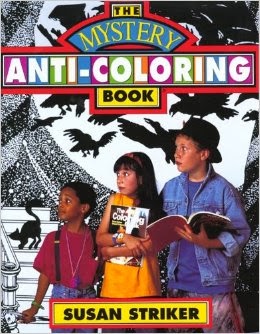
Which title has been the most successful?
The first book remains the best seller.
Did you propose any Anti-Coloring Book themes that the publisher rejected?
Holt rejected one of my favorites, Fashionista!: An Anti-Coloring Book for Fashion Designers.
The publisher rejected most of my books that were not Anti-Coloring Book formats. Recently I have become interested in doing these other art books for children, and am working with Amazon and Xlibris to publish them myself.
Did you propose any individual Anti-Coloring Book activities that the publisher rejected?
Not that I can remember, although I always handed in more activities than were needed and we’d select the favorites and put the others on “hold.”
Any funny stories about the Anti-Coloring Books, such as an unusual way a school or class used one?
After my book came out, some school districts banned coloring books and workbooks. I was very gratified—until I discovered that some of those schools couldn’t order my [emphasis MTN] books because they were considered workbooks.
Have you published any other books?- M is for Mola Art: A Kuna Indian Alphabet of Quilted Folk Art, for children (Xlibris)
- Please Touch; how to stimulate your child’s creative development through movement, music, art, and play (Simon & Schuster)
- Young at Art: Teaching Toddlers Self-Expression, Problem-Solving Skills, and an Appreciation for Art
Recently published:- Alphabet of Art (Amazon)
- McGonegal’s Zoo, an alphabet book of Oaxacan wood carvings
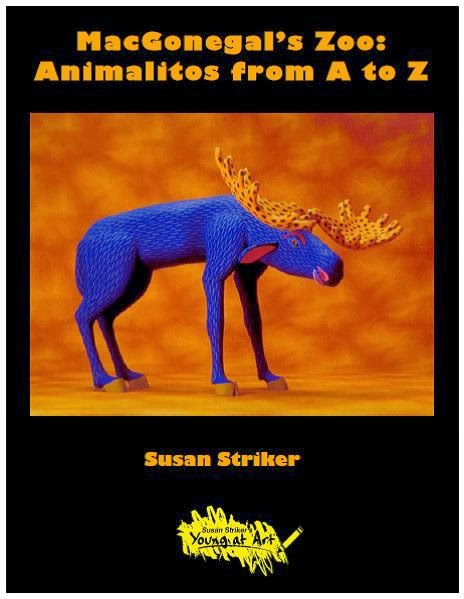
Are you still producing Anti-Coloring Books?
I am working on creating an Anti-Coloring app for iPads and mini iPads. It will include pages from published books that children can work on with iPads instead of crayons.
In the last few years, I have been very excited about working on using my collection of folk art to create books for children.
Every time an Anti-Coloring Book idea pops into my head, I scribble it down and tuck it in a loose leaf book. Who knows if I will ever use the idea again and if so, in what?
What else are you doing these days?
I continue to teach art full time to elementary school students in Greenwich, CT [MTN: Susan was named Elementary Art Educator of the Year] and am working around the clock on the Anti-Coloring app. A few of the original Anti-Coloring Books are going out of print and as the rights revert back to me I publish them through Amazon. It used to be considered a disaster for an author’s books to go out of print, but I much prefer publishing them myself. My students pose for the covers.
When I started teaching in 1964, research and resources in the field of art education were slim. As I learned about sound art projects and developed lessons of my own, I became fanatic about typing and illustrating all of my art lessons. I had hundreds of pages and never really knew why I had taken on this job. I just couldn’t stop.In the last two years, it has all fallen into place. I reorganized all of my art lessons by subject and created art curricula for teachers. So far, I have put together a curriculum of multicultural art projects and another based on the great master artists. I am now working on a series of workbooks I call Art-Rithmetic ® which includes art projects that teach math concepts. Color and Shape Curriculum are long written and photographed, but still need some finishing touches before I send it off to a printer.I had a health scare a while back and was in the hospital thinking I couldn’t possibly die because I hadn’t finished all of my books. It turned out to be a false alarm, but it got me focused and busy. I now realize that the job I didn’t know why I was doing will be my legacy for parents and teachers. Do you ever hear from people who grew up with the Anti-Coloring Books? If so, do any particularly meaningful comments come to mind?
Yes, I do and I often post their comments on my web site.
I also hear from former students who are now grown and have children of their own drawing in my books.
What do you think the legacy of the Anti-Coloring Books is?
I hope it makes people think about how art should help children think for themselves and solve their own problems rather than coloring in an adult’s drawing.
Anything you’d like to add?
If people have enjoyed my books, I love to ask them to make comments on the Amazon or Barnes & Noble sites.
Cos Cob, CT students posed for the
new cover of The Fifth Anti-Coloring Book
In 2004, I wrote a picture book manuscript called Everyone is the Only One. (I remember precisely where I was when the idea hit: the guest room in a friend’s house.)
It is about a boy named Ansel who feels uncomfortable for being the only dwarf at his new elementary school. Once his classmates learn this, they remind him one by one that each of them is also the only one in some way…only one with braces, only one allergic to peanuts, only only child, and so on.
I submitted to editors. No takers.
A couple of years later, I learned that the idea actually did get published, and in the year I sent it around…just not by me. Jane Naliboff’s The Only One Club follows a similar premise, except the central character’s distinction is that she is Jewish.

Parents and educators: I encourage you to encourage your kids to look at their circle of intimates and determine the ways in which each of them is also the only one. It’s a wonderful and worthy challenge that will get kids thinking about how we are different and how that is good.“Instead of always telling our children that we are all equal and the same, we should tell them that we are all different. Saying we’re the same naturally makes them look for differences. Conversely, saying we’re all different (in appearance, cultures, etc.) makes them instinctively look for ways we’re alike.”
—Erica L. Scott, Binghamton, NY, 2009 letter to Newsweek
In 12/13, I received a compelling email from Tayyab Ajmal in Pakistan:
I teach primary, secondary and tertiary students (poor/needy) English but its all pathetic situation. We do not have books, libraries or book shops over here in my city. The habit of reading is dying day by day which is not a good thing.
Can you plz send a copy of Vocabulary Cartoon of the Day book.
Despite how much I dread waiting in line at the post office (I value the service but it sometimes seems they go slow on purpose), I immediately said yes. Tayyab’s excerpted response:
thanks for your reply as i thought i am from Pakistan and so no one will reply.
This was heartbreaking.
Tayyab asked several more questions:
Is it ok if i can be in loop like asking some questions regarding English language, vocab and grammar etc. in future?
Do you know any tutor/post grad student on Skype who can be my MENTOR.
Can you advise any classic movies for improving English. I am a big fan of Hallmark Hall of Fame movies.
I said yes, no, and yes, and recommended movies including Twelve Angry Men and The Sound of Music.
I asked if Tayyab discovered me because I wrote a children’s book about Pakistan many years ago:
He said yes and then asked the following: Is it possible if i can get a Tablet PC (new/used) as a donation. It would be a really good AID to teach as i do not have my PC. Can you check with your family and friends as its CHRISTMAS ahead so any one like to GIVE/GIFT.
I do not need an expensive one just a normal one with normal specs like i can teach through videos, play audio files, share picture/photo for vocab building etc. [He sent this link.]
In response to this, I cut him a deal. I asked him to send me photos of his students with the books I would send and in exchange I’d blog about this experience—including a call to action to raise the money to send this clearly passionate teacher a tool that would be a relatively small cost for some of us and a huge asset for him. He sent photos:
How to help improve a few lives (AKA Kickstarter Lite):
Please simply PayPal me $5; to do that, all you need is approximately 27 seconds and my email, [email protected]. (If you prefer to mail a check, email me for my address.)
To make this happen, I estimate we’ll need about $250, including shipping. That’s only 50 people contributing only $5. (Of course, should you wish to give more, that will be gladly welcomed. Also welcomed: suggestions as to which tablet to get him.)
Once we hit the goal, I’ll stop accepting donations and add an addendum here indicating the effort has completed successfully.
We’ll likely never meet Tayyab or his students, but we will know the effect of this small gesture.
I’ll again ask him to send us a photo of his students, this time with the tablet PC.
...this:
And is therefore aqua cool. (“Super” cool = so overused.)
The title of my post way back on 7/21/08, five months after I launched this blog, was “‘New’ Bill Finger photo 1 of 9.”
But there were no subsequent posts unveiling photos 2-9.
Until now.
(Less three I published in Bill the Boy Wonder: The Secret Co-Creator of Batman, plus one I have found since.)
Bill (standing) at the (second) wedding of his friend Charles Sinclair, 1964
The title of my post way back on 7/21/08, five months after I launched this blog, was “‘New’ Bill Finger photo 1 of 9.”
But there were no subsequent posts unveiling photos 2-9.
Until now.
(Less three I published in Bill the Boy Wonder: The Secret Co-Creator of Batman, plus one I have found since.)
Bill and son Fred, Bronx Zoo, 1951 or 1952Tune in tomorrow to see the sixth and final glimpse of Bill that has never been published.
The title of my post way back on 7/21/08, five months after I launched this blog, was “‘New’ Bill Finger photo 1 of 9.”
But there were no subsequent posts unveiling photos 2-9.
Until now.
(Less three I published in Bill the Boy Wonder: The Secret Co-Creator of Batman, plus one I have found since.)
Bill (right) with sister-in-law Irene Flam,
Ellis Epstein (Bill’s wife Portia’s grandfather),
and James Epstein (Bill’s father-in-law), 1950s
Tune in for the next two days to see two more glimpses of Bill that have never been published.
The title of my post way back on 7/21/08, five months after I launched this blog, was “‘New’ Bill Finger photo 1 of 9.”
But there were no subsequent posts unveiling photos 2-9.
Until now.
(Less three I published in Bill the Boy Wonder: The Secret Co-Creator of Batman, plus one I have found since.)
Bill with his first wife Portia, son Fred, and Portia’s father James, 1949
Tune in for the next three days to see three more glimpses of Bill that have never been published.
The title of my post way back on 7/21/08, five months after I launched this blog, was “‘New’ Bill Finger photo 1 of 9.”
But there were no subsequent posts unveiling photos 2-9.
Until now.
(Less three I published in Bill the Boy Wonder: The Secret Co-Creator of Batman, plus one I have found since.)
Bill and his first wife Portia, Provincetown, MA, 1940s
Tune in for the next four days to see four more glimpses of Bill that have never been published.
Since Bill Finger’s death in 1974, only two photos of him had been published and republished, so people began to say that those were the only two photos of Bill that existed.
Rather they were the only two photos that were known to exist.
No one had looked hard enough yet.
So I set out to remedy that.
And from seven sources over nine months, I found a bunch more.
The title of my post back on 7/21/08, five months after I launched this blog, was “‘New’ Bill Finger photo 1 of 9.”
But there were no subsequent posts unveiling photos 2-9.
Part of this was oversight.
Part of this was forethought, since I eventually published three of those original nine in Bill the Boy Wonder: The Secret Co-Creator of Batman.
For some time now, I have been intending to reveal the remaining five. What is finally motivating me to do so is that I recently
found
yet
another.
It has been years since I last uncovered a Finger photo that had been buried in a private collection, but no amount of time will make me forget the high.
I did not uncover this one personally—Bill’s only grandchild Athena did.
Of the six “new” photos I will share here over the next six days, this latest discovery dates back the earliest:

Tune in for the next five days to see five more glimpses of Bill that have never been published.
In December 2012, I reached out to David Bushman at the Paley Center (formerly the Museum of TV and Radio) in New York to ask if they bring in speakers.
They don’t…at least not in the way I was envisioning.
But this kicked off the development of an event I am thrilled to finally be able to announce: a star-studded (plus me) panel about Batman’s cultural influence on the occasion of his 75th anniversary.
The panelists:- Kevin Conroy, Voice of Batman, Batman: The Animated Series; The New Batman Adventures
- Chip Kidd, Designer, Batman: The Complete History; Author, Batman: Death by Design
- Marc Tyler Nobleman, Author, Bill the Boy Wonder: The Secret Co-Creator of Batman
- Kevin Smith, Filmmaker; Writer, Batman comic books; Host, Fat Man on Batman podcast
- Michael Uslan, Executive Producer, The Dark Knight film trilogy; Author, The Boy Who Loved Batman
The moderator:- Whitney Matheson, Columnist, USA Today’s “Pop Candy”
The details:
Date: Monday 5/5/14
Time: 6:30 p.m.
Place: 25 West 52 Street, New York
Cost: $25Dress: cape and cowl optional
Space is limited. Register today! Tomorrow is also fine. Any later may be too late.
Thank you to Derek Wolfford and all members of this group for your ongoing support.
This acknowledgement—like Bill receiving credit for Batman—is long overdue.
“I thought it was really neat how Sally didn’t know you was really Superman and so she loved you for yourself and not for everything else. I love you for yourself also.”
—The Kryptonite Kid, page 14
I keep an eye out for all things red, yellow, and blue. Well, not quite all things…I am mostly interested in lesser-known things. That is how I discovered The Kryptonite Kid, a brave, heartbreaking, fondly remembered 1979 novel by Joseph Torchia, who passed away in 1996.
(The quotation above is from Jerry, the elementary school-aged protagonist, and “Sally” is a character in a Superman story Jerry read.)The novel was critically acclaimed by everyone from Publishers Weekly to The New Republic. It was an ALA Best Book for Young Adults. Of special note, legendary New Yorker critic Pauline Kael: “No other author has treated the effects of Pop mythology with such grace and feeling.”(Joseph was featured in the 3/6/80 issue of The Advocate, in an article starting on page 20. Can anyone please email me a scan of that article?) UK edition
I was so moved by the semi-autobiographical story that I reached out to Joseph’s family (brother Joseph and niece Erika) to interview them; they also put me in touch with his legal representative, Jeff Adams. I’ve done an interview like this before with emotional effect.
And this time, something unexpected and exciting came out of it; the family is interested in reissuing the book (originally published by Holt, Rinehart and Winston).
Up, up, and there’s a way…
Enjoy the interview.
Tell me about Joseph.
Jasper: Born in 1946, Joseph was the third child of four (arriving four years after me). Due to our significant age difference, we were not extremely close growing up and we had our own friends.
In high school, he excelled in English. He graduated from Johnsonburg (PA) High School in 1964 (I believe), attended California University of Pennsylvania for the first two years of college, and then transferred to the University of Florida in Gainesville, where he majored in journalism (graduated in 1968?).
He joined the Peace Corps in Ankara, Turkey (1971). Afterwards, he worked as a feature writer at the West Palm Beach Post in Florida. He wrote a feature about having his nose done (before/after, etc.). There are some great shots of this laying around somewhere.
In the ‘70s, he moved to San Francisco and wrote for the San Francisco Examiner and Chronicle. During that time, he wrote some fascinating pieces, such as his experience living as a homeless person would in the Tenderloin for two weeks.
In the ‘80s, he moved to Napa to focus on his novel writing and photography (black and white). As writing was not extremely lucrative, his photography/portrait career was what paid the bills. Jeff: Extremely friendly, smart, creative, curious, talented. Probably the most creative person I have ever known, with a drive to communicate, to find rewarding channels for his imagination…which was unstoppable. Very childlike in his wonder about anything that interested him, very deep feeling, very giving of himself. People of all kinds were drawn to him.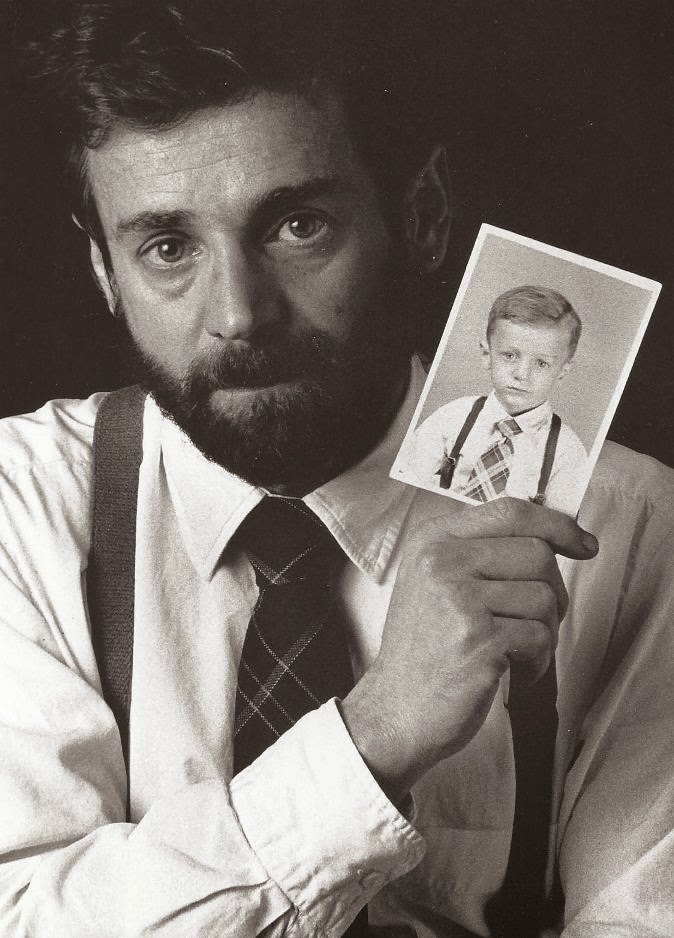
Jeff, how did you meet Joseph?
Jeff: One of my hobbies is book collecting. For example, I have built probably the foremost collection of the American author Don Marquis, best known for the tales of Archy the cockroach and Mehitabel the alley cat. Living in NYC in the late 1970s and early 1980s, I thought at one point I might like to collect a living author at beginning of a promising career. When I read The Kryptonite Kid, I thought I had my author and contacted Joseph, then living in San Francisco, to ask him to sign my book. A correspondence developed, a literary friendship really, which continued when my wife and I moved to San Francisco in 1984; we all became good friends, right up to his passing in 1996. A couple of years ago I was able to place his literary archive at Stanford University. What inspired him to write The Kryptonite Kid?
Jasper: The Kryptonite Kid was Joseph’s first novel. As kids, the one thing we had in common was that we bought every Superman, Batman, Superboy, every Marvel comic that came out every week for 10 cents. We were Superman fanatics since we could read. I may have gotten him hooked. Our favorite was Superman (I liked Captain Marvel, too). We would share the comic books. When we went off to college, our mom threw them all away. Our dad had a coin collection that we also worked on together.
Joseph and Jasper
How autobiographical is the book?
Jasper: Very much so. We grew up in a small paper mill town in northwestern Pennsylvania—Pulpsburg in the book, Johnsonburg in reality. Johnsonburg was inhabited predominately by Italian and Polish people and had a large Catholic community. Both Joseph and I attended Catholic school for primary and middle school. We walked a half-mile to school, over the B&O and the Pennsylvania railroad tracks, coming home every day for lunch. We had our main dinner at lunchtime. Our mom was an amazing cook and she cooked a big meal every day.
In 1944-45, when I was two or three years old, I walked out on the roof of our apartment building, looked down at the kids walking to school, and said, “Wanna see me jump?” Cousin Theresa ran in to tell my father and he came out and pulled me off the roof. From the years of recounting, my father’s eyes were bloodshot for days afterwards. [This inspired a pivotal scene in the novel.]50th wedding anniversary of Joseph’s parents;
Joseph in dark tie and glasses, Jasper with mustache
Was Joseph a Superman fan as an adult?
Jasper: Huh. (thinks about this) Not sure, but assume he was. As for me, I stopped buying them when in high school.
Did he like superheroes in general, or was it only Superman in particular?
Jasper: Superheroes in general.
Given that it was in part based on his own life, was it hard for him to write the book?
Jasper: I know he had to rewrite it twice (publisher made some significant changes). It was done on an IBM Selectric typewriter.
Jeff: I doubt it was hard to conceive the format but very important for him to get it just right, which would be true of anything he did. He could obsess on an artistic challenge but live happily with the result, and move on. He lived with words, knew their power, was enormously tough on himself in rewrite phases. This was his first novel and though he was already a professional journalist, this was fiction—which by my estimation was as real to him as anything in life. And he was quite proud of The Kryptonite Kid not only for getting it right but also because it touched so many people.
Erika: I heard from Jeff that the publisher wanted him to use the correct spelling of words in the letters to Superman. [The book is epistolary, the narrator is a seven-year-old, and the letters are printed unedited from “child-speak.”] Ugh.
What was the family reaction to the book?
Jasper: They were very proud of him. However, my dad didn’t read the book. Theresa Ann, who was the eldest sibling in the convent…not sure if she read it.
Why didn’t your dad read it?
Jasper: I don’t know why Papa didn’t read Joey's book. Maybe he did and I don’t know. Sorry I can’t give you any facts concerning this.What was Joseph’s reaction to the media response to the book?
Jasper: He was very happy with the response he got from Pauline Kael.
Did he ever hear from DC Comics (publisher of Superman) about the book?
Jasper: He had a couple comic strips that he wanted to include in the book, but they would not allow their inclusion.
Did he ever hear from any organizations dedicated to protecting abused children about the book? Did he ever hear from the church?
Jasper: Not that I know of.
Was there ever talk of Joseph writing a sequel?
Jasper: Not that I know of.
Jeff: No, other than the piece he published in Gay Sunshine. I don’t have a recollection of the piece except that it took the concept well beyond what a mainstream reader would find relatable. I do not believe it was excised from the novel, but an isolated area of the concept that he felt he could explore with authority and for a specific audience.
Was there interest in developing the story as a movie?
Jasper: Yes. There are two screenplays written (in his archives), but neither was picked up.
Jeff: I would say very definitely, and at least one screenplay was developed with a collaborator. Also, similar interest in seeing it as a play.
Did Joseph write any other books after As If After Sex (1983)? If so, did he try to get them published? If not, why did he stop writing?
Jasper: Yes, he wrote two other books that were not published: Purgatory, PA and Edible Variety (don’t know years). He also [wrote] short stories—one on Flannery O’Connor, who was his favorite writer. He never really stopped writing, that I know of.
Jeff: Yes, The Edible Variety was completed, I believe at least a couple of drafts. He was also in development stages on a work we called the “Turkey Book.” His agents may have shown The Edible Variety around but I do not recall why it didn’t get into print. But for sure he did not stop writing.
Tell me about his photography.
Jeff: He was a professional photographer, working independently for local businesses and other customers. He also did fine art photography on his own time, working with teachers and refining techniques in practice. It was his source of income, but also a new and exciting channel for his creative energies.
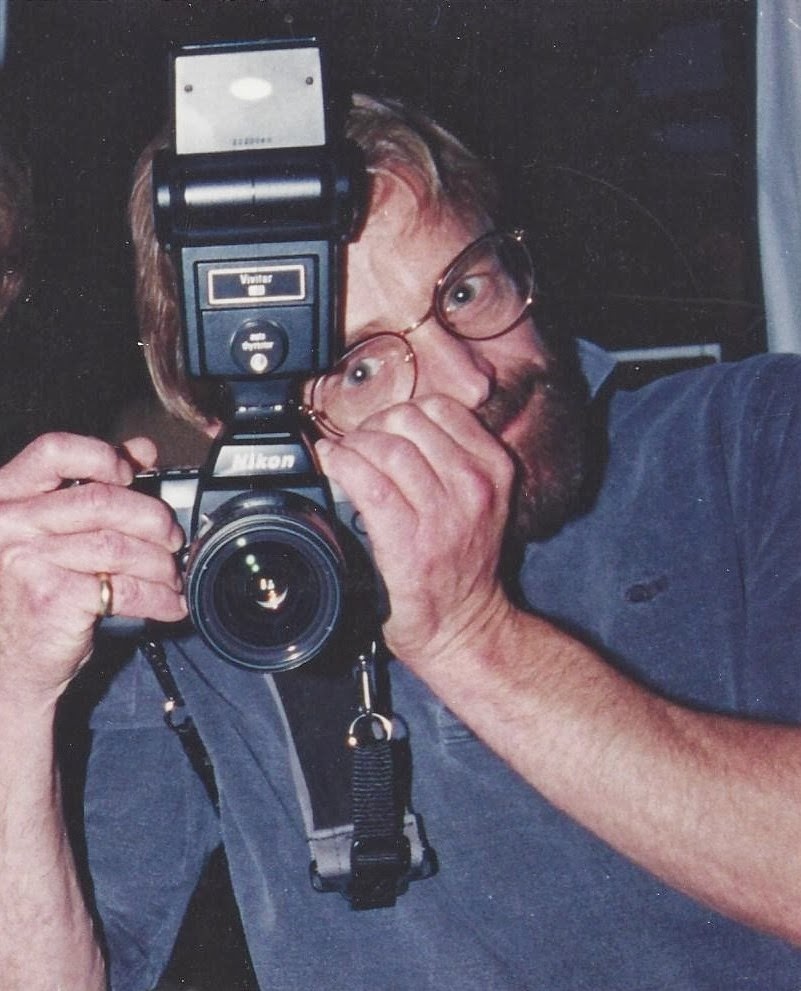
1994
When and how did he die?
Jasper: He died in 1996 of AIDS-related cancer.
Was he in a relationship when he died, and if so, is the family still in touch with that person?
Jasper: No, he was not in a relationship at the time. He was living alone. He had many close friends in Napa.
What did you first think when I approached you about doing an interview?
Jasper: Anything that would help The Kryptonite Kid to be republished or the screenplay revived would be fantastic.
Anything else you’d like to add?
Jeff: As an artist he was just hitting his stride and was devastated—as were his friends—that he would not live to realize his full potential. I would be honored to play a role in giving new life to The Kryptonite Kid for new generations of readers. Ease into the pop mythology conceit, but be prepared for the deeper subjects as the story unfolds. Very quickly, you realize this is not a children’s book—but perhaps one for adults who wonder exactly when they exited childhood. I think Joseph Torchia poured himself, and his empathy for people, into this haunting novel. You see it in the twin prologue/epilogue.
And you thank him.
Of late I have been spoiled by superb school visits, and met no exception on 2/19/14 at Pine Road School in Pennsylvania (my first author appearance in the state).
Special thanks to librarian Keith Crowell, who was an absolute pleasure to work with.This school was the second ever at which students and staff dressed as superheroes for my visit. As it happens, the first was precisely a week prior.Pine Road sold a pine tree's worth (sorry) of books, including Vanished: True Stories of the Missing. I'd not thought about the fact that the opening story in the book (about 2nd grader Erica Pratt) took place in Pennsylvania.After my Superman/Batman/Siegel/Shuster/Finger talk, a 4th grade girl came up to me and said that she thought she was going to start crying while I told the saddest parts of the Bill Finger story. I told her that it would have been okay and that others have, including me.
A 4th grade boy asked me, "What is your perspective on misery and what is your perspective on joy?"
Definitely a first for me, and a profound one at that. I stammered out an answer-by-blindside that did not involve Bill, though in retrospect it could have. His story is that odd blend of both. photo by Ellen Zschunke; note Batgirl
This blog launched on 2/19/08.
Every February 19, I share what I feel have been the best posts of the previous twelve months.
This year's medalists:
speaking
promotion
research
publishing
miscellaneous
View Next 25 Posts




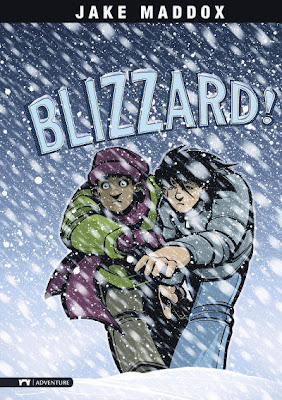

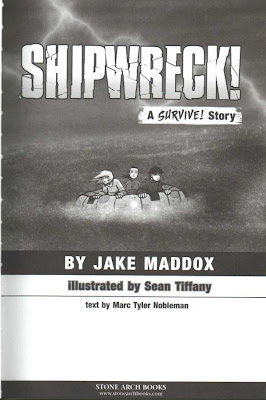



.jpg)
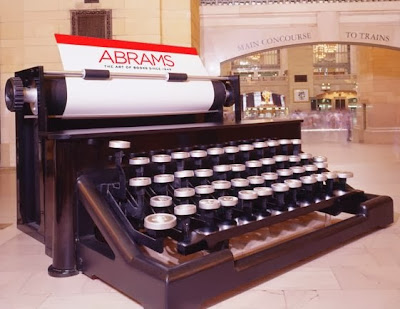
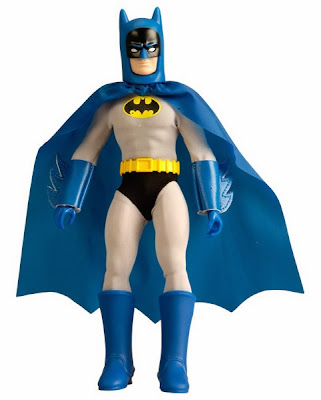
.jpg)






















